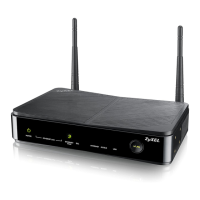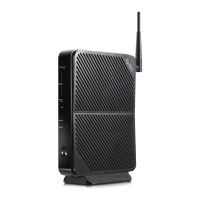Chapter 11 Network Address Translation (NAT)
SBG3500-N Series User’s Guide
210
11.4.1 Add/Edit Port Triggering Rule
This screen lets you create new port triggering rules. Click Add new rule in the Port Triggering
screen or click a rule’s Edit icon to open the following screen.
Figure 90 Port Triggering: Add/Edit
The following table describes the labels in this screen.
Trigger Proto. This is the trigger transport layer protocol.
Open Start Port The open port is a port (or a range of ports) that a server on the WAN uses when it sends
out a particular service. The SBG3500-N Series forwards the traffic with this port (or range
of ports) to the client computer on the LAN that requested the service.
This is the first port number that identifies a service.
Open End Port This is the last port number that identifies a service.
Open Proto. This is the open transport layer protocol.
Modify Click the Edit icon to edit this rule.
Click the Delete icon to delete an existing rule.
Table 57 Network Setting > NAT > Port Triggering (continued)
LABEL DESCRIPTION
Table 58 Port Triggering: Configuration Add/Edit
LABEL DESCRIPTION
Active Select the check box to enable this rule.
Service Name Enter a name to identify this rule using keyboard characters (A-Z, a-z, 1-2 and so on).
WAN Interface Select a WAN interface for which you want to configure port triggering rules.
Trigger Start
Port
The trigger port is a port (or a range of ports) that causes (or triggers) the SBG3500-N
Series to record the IP address of the LAN computer that sent the traffic to a server on the
WAN.
Type a port number or the starting port number in a range of port numbers.
Trigger End
Port
Type a port number or the ending port number in a range of port numbers.
Trigger Protocol Select the transport layer protocol from TCP, UDP, or TCP/UDP.

